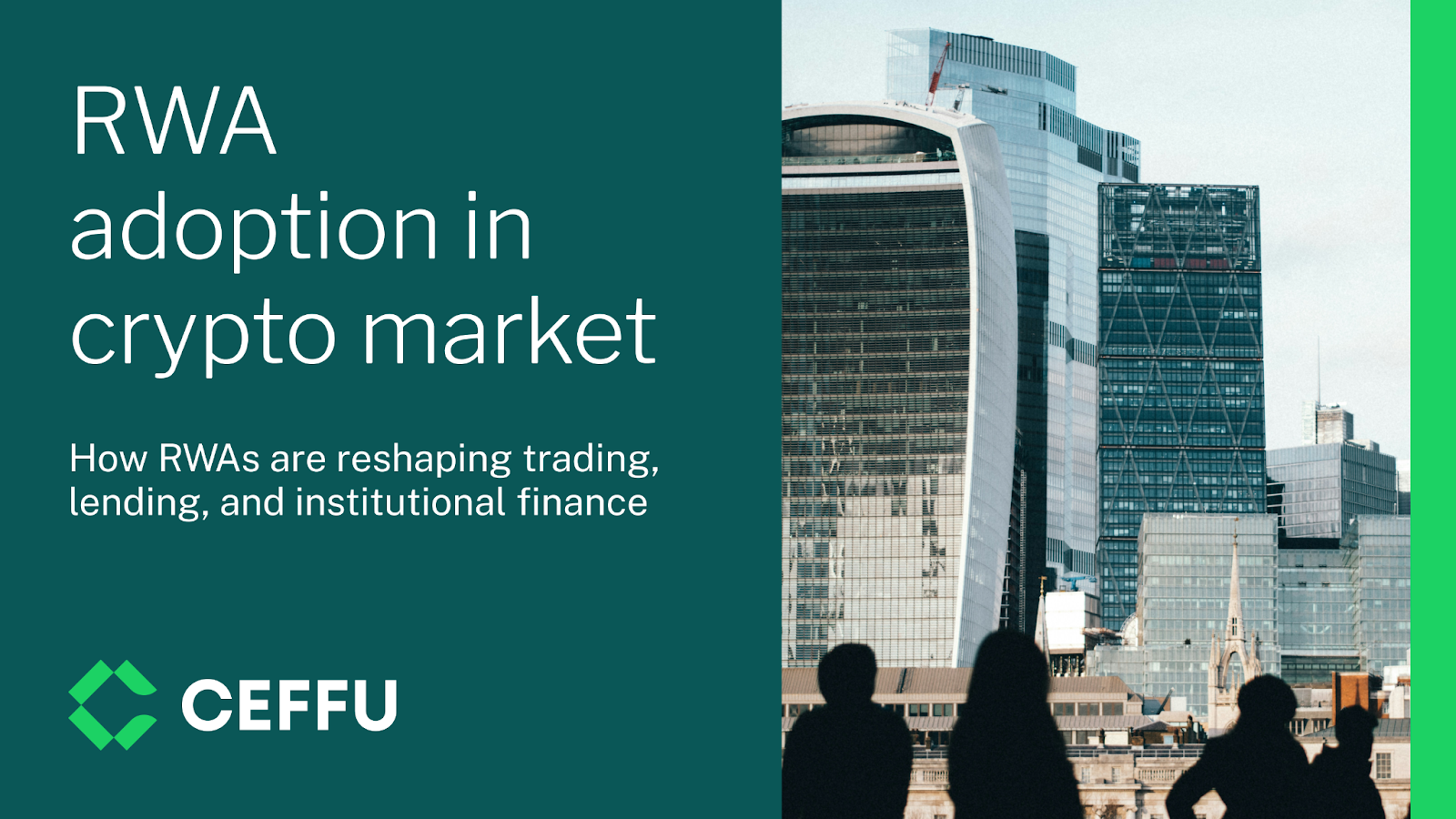RWA Adoption in Crypto Capital Markets: Where Are We Now?

The convergence of real-world assets (RWAs) and crypto capital markets is underway with tokenized U.S. Treasury bills, corporate debt, commodities, and real estate being issued and actively traded on blockchain networks. For institutional finance, this development signals both an expansion of market infrastructure and a potential reconfiguration of how liquidity, credit, and collateral flow across global capital markets.
We will take a closer look at the current state of RWA adoption in crypto capital markets, how it’s reshaping trading, lending, and DeFi, and what institutions should expect next.
1. The State of RWA Adoption
Tokenized Treasuries Lead the Way
Among all asset classes, tokenized U.S. Treasuries have seen the fastest adoption. It has reached a new all-time high of $7.45 billion on Aug. 27, driven by products from Circle, OpenEden, Franklin Templeton and others. These on-chain instruments appeal to institutions and crypto-native treasuries seeking safe yield with on-chain accessibility.
Beyond Treasuries: Expanding Asset Classes
Credit & Debt: Private credit and corporate debt tokenization initiatives are gaining traction. Platforms like Maple Finance and Centrifuge are creating structures that allow crypto-native investors to provide financing to real-world borrowers.
Real Estate & Commodities: Tokenized real estate and gold-backed stablecoins are less liquid but are beginning to find their niches, particularly for investors seeking diversification.
Money Market Funds: Some institutions are experimenting with tokenized MMFs, bridging traditional short-term instruments to on-chain liquidity pools.
Institutional Engagement
While adoption is still early, the involvement of regulated issuers, banks, and custodians is accelerating. The fact that household names in asset management have piloted tokenized offerings signals that RWA adoption is moving beyond experimental DeFi projects into institutional-grade financial instruments.
2. RWAs in Trading, Lending, and DeFi
Trading
RWAs are starting to trade on permissioned venues and decentralized platforms that enforce KYC/AML. This opens secondary liquidity while still respecting compliance frameworks. A tokenized money market fund can, for instance, be traded peer-to-peer or used as a base asset for structured products.
Lending & Collateralization
Collateralization is where RWAs may have the most immediate impact. Tokenized Treasuries can be pledged as collateral in repo-like transactions, crypto-backed lending platforms, or even cross-margin frameworks. This allows institutions to tap into yield-bearing safe assets while unlocking capital efficiency.
DeFi Integration
RWAs are increasingly being integrated into DeFi protocols. OpenEden’s USDO, for example, is a yield bearing digital asset backed by tokenized money market funds. Instruments like USDO demonstrate how yield-bearing RWAs can serve as stable, compliant collateral within DeFi, bridging traditional and decentralized finance
3. Challenges Slowing Down Adoption
Regulatory Uncertainty: Jurisdictions differ in their treatment of tokenized securities, leading to fragmentation.
Custody & Compliance: Institutions require qualified custodians who can handle both digital-native tokens and tokenized RWAs under strict governance frameworks.
Liquidity & Interoperability: Tokenized RWAs often live in siloed ecosystems, limiting secondary liquidity and cross-chain usage.
Counterparty & Operational Risk: From smart contract exploits to issuer defaults, risk frameworks need strengthening to support institutional participation.
4. What’s Next for Institutional Finance
The trajectory of RWA adoption suggests three likely developments:
Scaling Beyond Treasuries: As regulatory clarity improves, expect expansion into corporate bonds, emerging market debt, carbon credits, and alternative assets.
Integration with Institutional Trading Infrastructure: More RWAs will be listed on compliant digital exchanges, bridging liquidity between traditional markets and blockchain venues.
Programmable Finance at Scale: RWAs will unlock use cases beyond passive yield, such as automated collateral management, composable structured products, and new forms of tokenized credit markets.
For institutions, the ability to move seamlessly between on-chain and off-chain markets could transform capital allocation strategies. Tokenized RWAs will not just replicate existing financial instruments, they have the potential to re-architect global financial plumbing.
Final Thoughts
RWA adoption in crypto capital markets is past its infancy but far from mature. Tokenized Treasuries have proven demand exists, but the next phase requires building compliant, scalable infrastructure that institutions can trust. For institutional finance, RWAs represent a path toward deeper capital efficiency, risk diversification, and access to programmable markets.
At Ceffu, we recognize that secure, regulated custody is critical in enabling institutions to participate in this shift. MirrorRSV exemplifies this evolution, allowing institutions to post yield-bearing RWAs such as tokenized Treasuries as collateral, while keeping their assets safeguarded under Ceffu’s qualified custodian framework.
By bridging custody, collateral, and capital markets infrastructure, Ceffu helps institutions unlock the benefits of RWAs, without compromising on compliance, governance, or security.
Key Takeaways
RWA adoption is accelerating, with tokenized U.S. Treasuries reaching record highs and emerging use cases in credit, real estate, commodities, and money market funds.
Institutions are beginning to participate, as asset managers, banks, and custodians pilot tokenized offerings beyond DeFi experiments.
RWAs are reshaping trading, lending, and DeFi, serving as collateral, diversifying reserves, and opening new liquidity channels while maintaining compliance frameworks.
Challenges remain, including regulatory uncertainty, fragmented liquidity, and the need for robust custody and compliance standards.
Ceffu’s MirrorRSV addresses these needs by enabling institutions to deploy RWAs like tokenized Treasuries as collateral: securely, compliantly, and efficiently.
Learn more about how Ceffu’s MirrorRSV bridges custody, collateral, and RWA adoption.
This is a general announcement and marketing communication. Products and services referred to here may not be available on the Ceffu entity you have onboarded with.